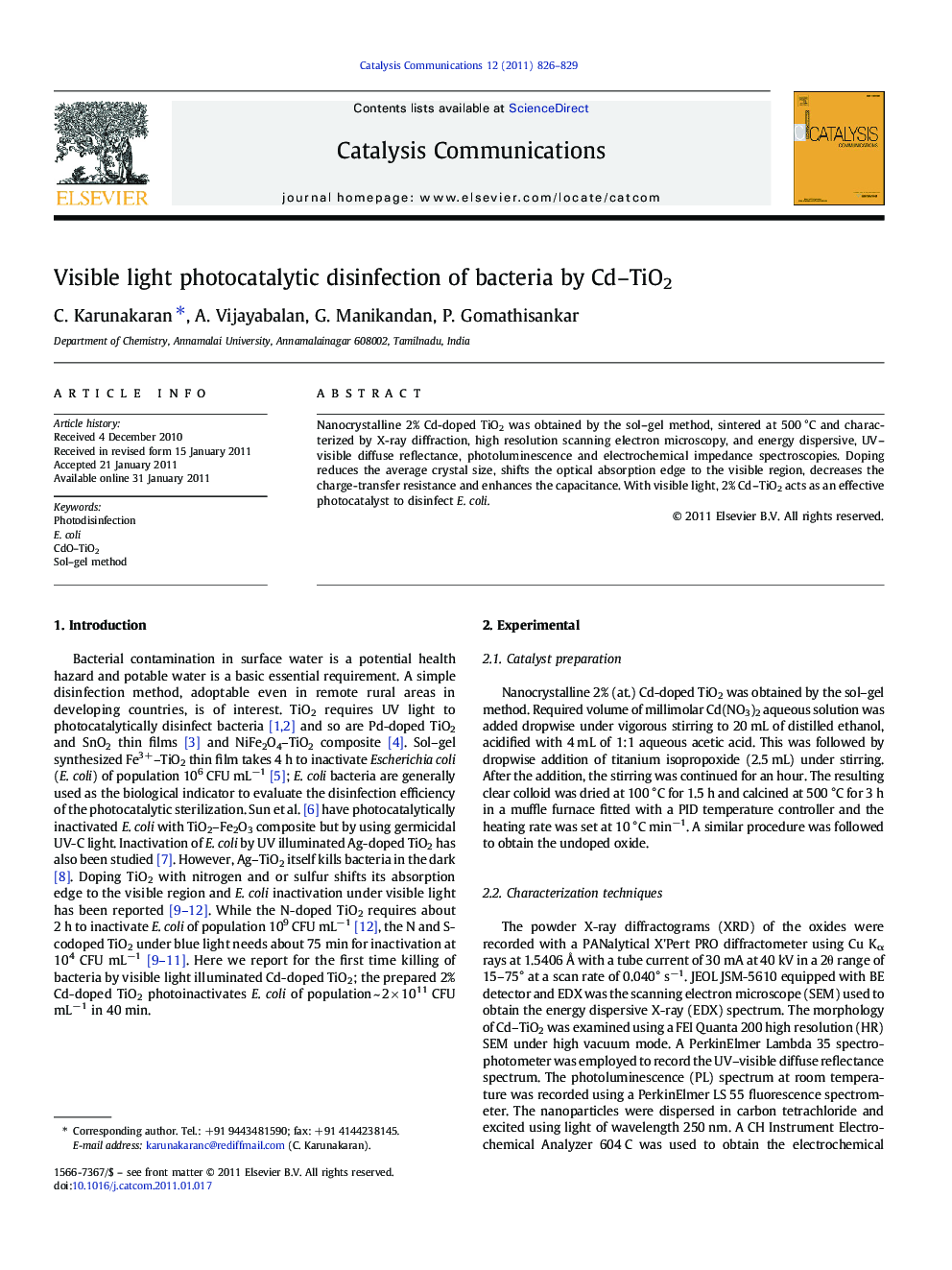| Article ID | Journal | Published Year | Pages | File Type |
|---|---|---|---|---|
| 50814 | Catalysis Communications | 2011 | 4 Pages |
Nanocrystalline 2% Cd-doped TiO2 was obtained by the sol–gel method, sintered at 500 °C and characterized by X-ray diffraction, high resolution scanning electron microscopy, and energy dispersive, UV–visible diffuse reflectance, photoluminescence and electrochemical impedance spectroscopies. Doping reduces the average crystal size, shifts the optical absorption edge to the visible region, decreases the charge-transfer resistance and enhances the capacitance. With visible light, 2% Cd–TiO2 acts as an effective photocatalyst to disinfect E. coli.
Graphical AbstractFigure optionsDownload full-size imageDownload as PowerPoint slideResearch Highlights►Doping TiO2 with Cd reduces crystal size and shifts optical edge to the visible region ►Cd-doping of TiO2 by the sol–gel method decreases charge-transfer resistance ►Nanocrystalline Cd–TiO2 effectively catalyzes bacteria disinfection under visible light
